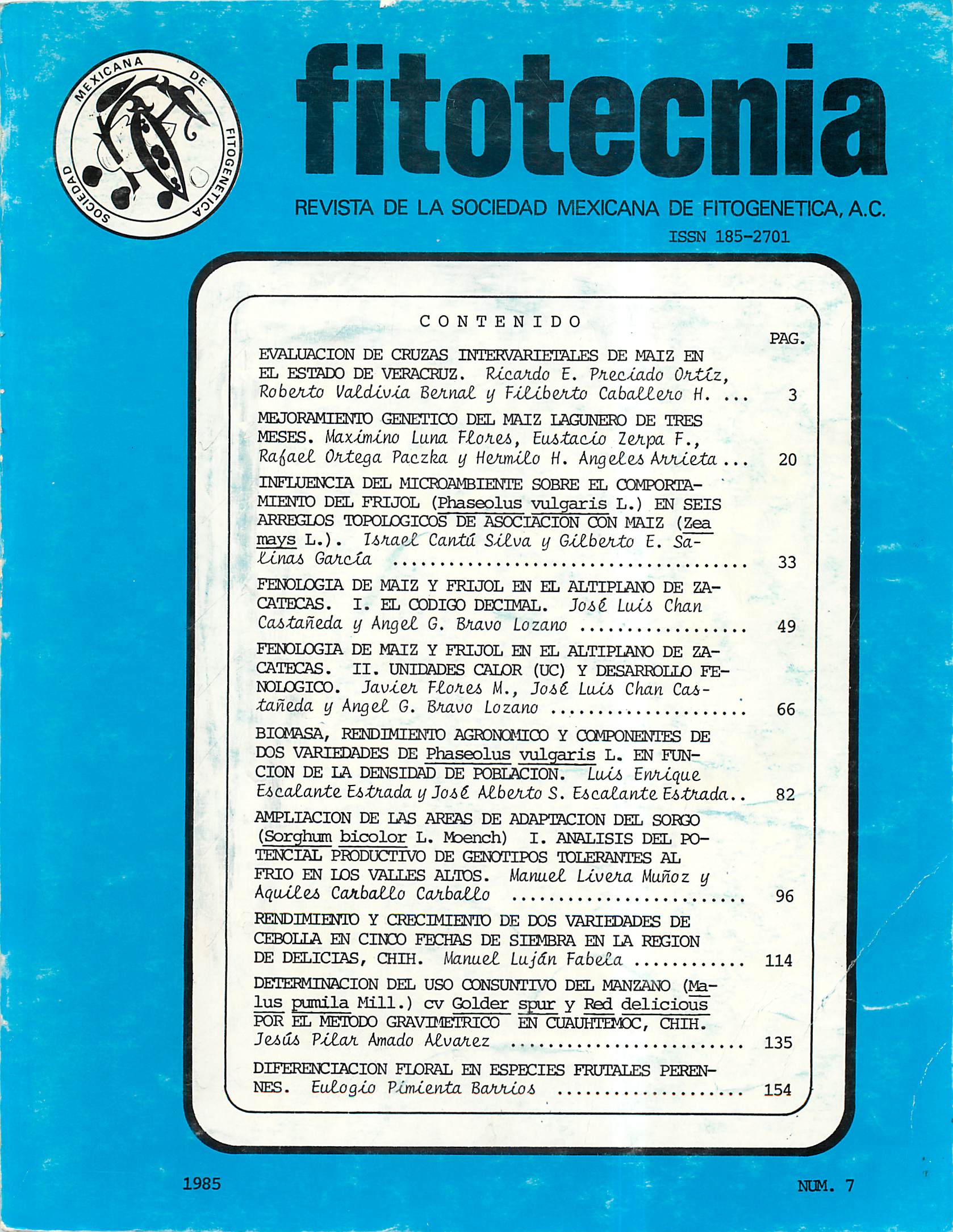BIOMASS, AGRONOMIC YIELD AND ITS COMPONENTS OF TWO VARIETIES OF Phaseolus vulgaris L. AS A FUNCTION OF POPULATION DENSITY
Main Article Content
Abstract
The effect of population density on seed yield, its components and biomass production was studied in Phaseolus vulgaris. The study was conducted in Iguala, State of Guerrero (Mexico), under field conditions with irrigation. Two varieties were studied: Michoacán 12-A-3 (M-12), a type ll, indeterminate, bush type plant (101 days to maturity) and Canario 107 (C-107), a type l, bush type, determínate plant (87 dáys to maturity). Planting was done Dec. 19, 1980; in rows 37 cm apart, two plants per hill along the row. The distance between hills was 10,'·15, 20, 25 and 30 cm, giving 17.5, 21.3, 26.6, 35.5 and 53.3 plants per square meter. Treatments were allocated in a split-plot design.
As population density increased, there was an increase in biomass per square meter and a decrease in biomass and seed yield per plant in both varieties. The decrease in yield per plant was compensated by the tncrease tn plant density, so seed yield per square meter was not affected: 1) i•n C-107, because their yield components didn't show significant differences; 2) in M-12, because the increase in the number of seeds per square meter-, was offset by a decrease in seed size. lt means that M-12 showed higher plasticity than C-107.

